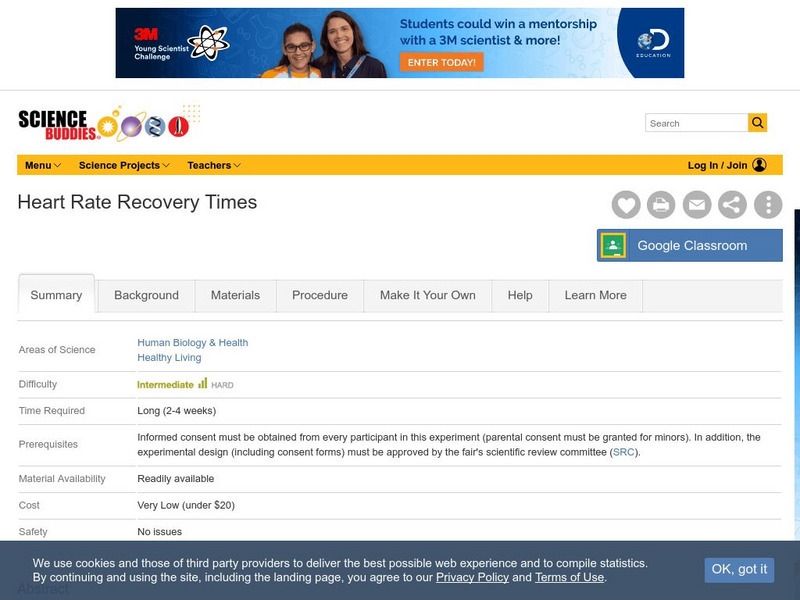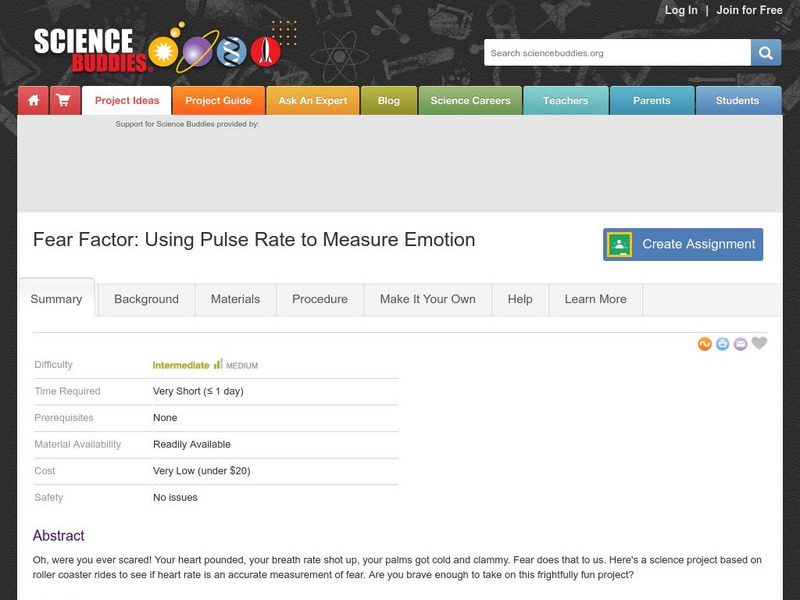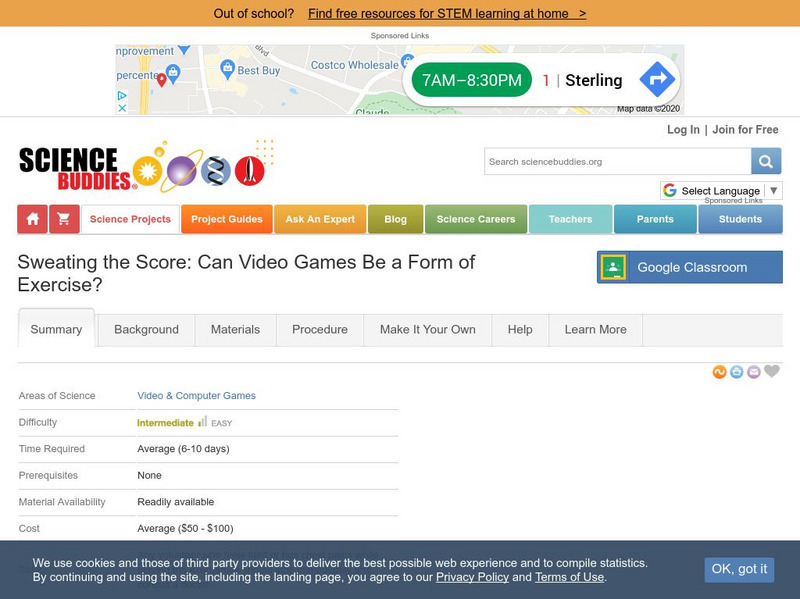PE Central
Bean Bag Freeze
Students play an activity similar to tag. After the teacher sets up cones to designate boundaries, students receive a bean bag and scatter in the playing area.
Curated OER
Aerobic Activities
Fifth graders discuss what aerobic exercise is, and the origin of its meaning. They view a list of activiities and and discuss why they are considered aerobic while other activities such as baseball is not considered aerobic exercise....
Curated OER
Nutrition Word Search Puzzle
In this health worksheet, students find the words that are in the word search puzzle that focus upon the vocabulary that is from the theme of the sheet.
Science Buddies
Science Buddies: Heart Rate Recovery Times
After exercise, your heart rate increases, this is normal for everyone. However this experiment asks whether the recovery time for a heart's beating rate is faster for people who get regular exercise versus those that do not.
Science Buddies
Science Buddies: A Day in the Life of Your Heart
Heart rates can be determined by the amount of physical activity your body is engaging in. The more physically active you are, the faster your heart beats. You can measure the rate your heart is beating by taking your pulse. This science...
Science Buddies
Science Buddies: Caffeine and Heart Rate: A Pharmacological Study Using Daphnia
In this project, water fleas (Daphnia magna), a semi-transparent freshwater crustacean, are used to study the effects of caffeine on heart rate. You do not have to learn how to take a crustacean's pulse though, because you can actually...
Science Buddies
Science Buddies: Heart Health: How Does Heart Rate Change With Exercise?
Your heart starts beating before you are born and keeps right on going through your whole life. Over an average lifetime, the human heart beats more than 2.5 billion times. Keeping your heart healthy means eating right, not smoking, and...
Ducksters
Ducksters: Kids Science Projects and Experiments: Pulse and Heartbeat
Kids learn by experimenting with science. Project about the heartbeat and pulse.
Science Museum of Minnesota
Science Museum of Minnesota: Your Heart and Lungs
Learn everything you've ever wanted to know about your heart and lungs as you journey through this human gallery. Animations, videos, lessons and links to new technologies are included.
BioEd Online
Bio Ed Online: The Science of the Heart and Circulation
In this unit teachers will evaluate student's current understanding of the heart and circulatory system through a pre-assessment. They will develop group concept maps and then repeat the assessment. Teachers can compare their prior...
Science Buddies
Science Buddies: Fear Factor: Using Pulse Rate to Measure Emotion
Do you remember a situation when you heart pounded, your breath rate shot up, and your palms got cold and clammy? Fear does that to us. Here's a science project based on roller coaster rides to see if heart rate is an accurate...
Science Museum of Minnesota
Lesson Plan: Pulse of Life
Students measure their pulse rate and explore how heart rate is affected by various activities.
TeachEngineering
Teach Engineering: The Beat Goes On
In this activity, students learn about their heart rate and different ways it can be measured. Students construct a simple measurement device using clay and a toothpick, and then use this device to measure their heart rate under...
Science Museum of Minnesota
Lesson Plan Site: Sounds of the Heart
In this site, students investigate the sounds of the heart, construct a stethoscope, and investigate the workings of valves.
National Institutes of Health
National Library of Medicine: Your Beating Heart
In this lesson plan site, the students will learn about the circulatory system and perform an experiment where they take their pulse after various activities.
PBS
Pbs Teachers: Drinking Straw Pulse Measurer
Measure the human pulse by counting the movements of a drinking straw attached with clay to the pulse point on the neck. Predict activities that affect pulse rate, and compare your pulse with another person's.
Science Museum of Minnesota
Lesson Plan: Keeps on Pumpin'
In this interactive site, students will measure and calculate heart rates and determine the amount of blood pumped by their heart.
Science Museum of Minnesota
Lesson Plan: Go With the Flow
In this effective site, students will name the parts of the heart and trace the flow of blood through the body. Contains related links.
Treehut
Suzy's World: Heart
Find out why your heart beats and perform an experiment to see your pulse moving.
BBC
Bbc Schools: Ks2 Bitesize: Science: Living Things: Circulation
Check Steve's cardiovascular health before he starts filming his dangerous wildlife special. Following the activity, read more about the heart, and then take a quick quiz to check for understanding.
Science Museum of Minnesota
Lesson Plan: Lub Dub (Valves)
In this concise site, students investigate the source of the sounds of the heart. Contains related connecting links.
National Cancer Institute at the National Institutes of Health
Seer Training Modules: Introduction to the Cardiovascular System
Self-guided learning activity where students learn about the structure and function of the human cardiovascular system. There is a short quiz at the end of the lesson to check for understanding.
Science Buddies
Science Buddies: Sweating the Score: Can Video Games Be a Form of Exercise?
The majority of video games are sedentary, meaning done in one position, but there is an increasing trend toward video games where the players are physically active. Whether or not these type of video games can be considered exercise is...
















